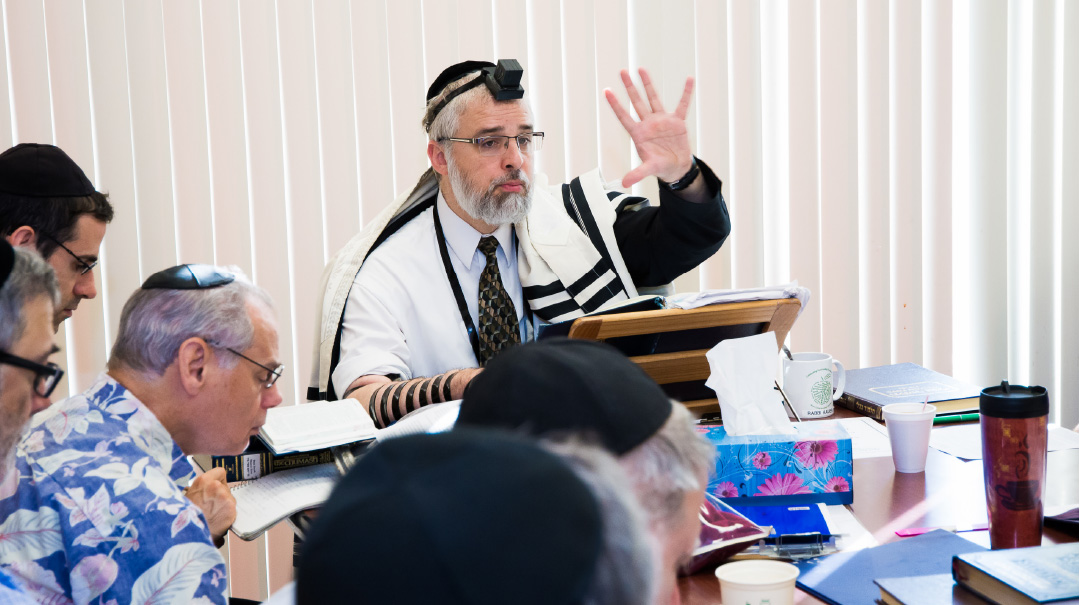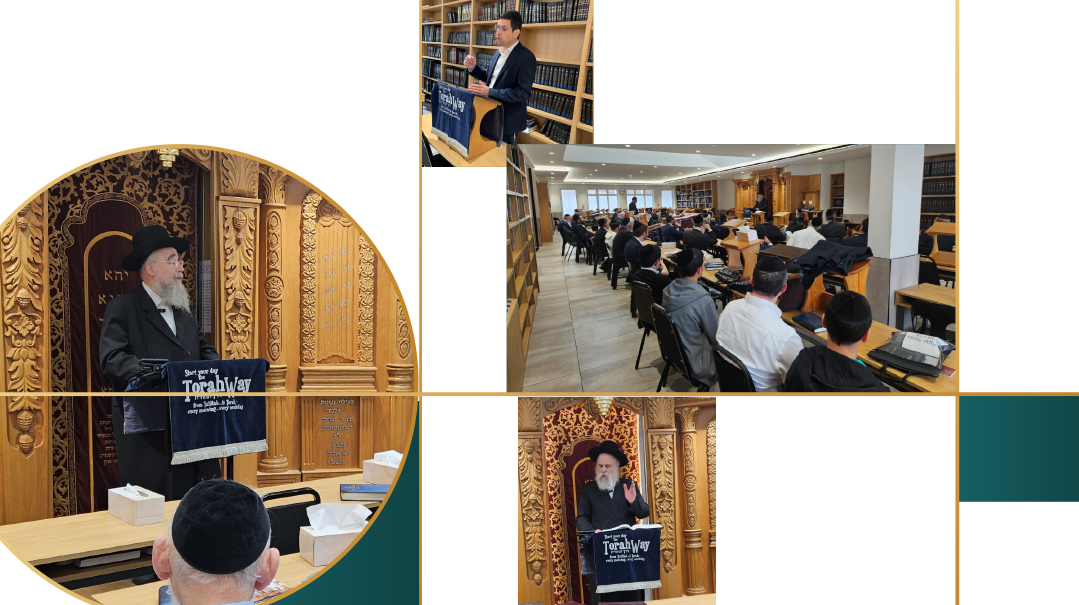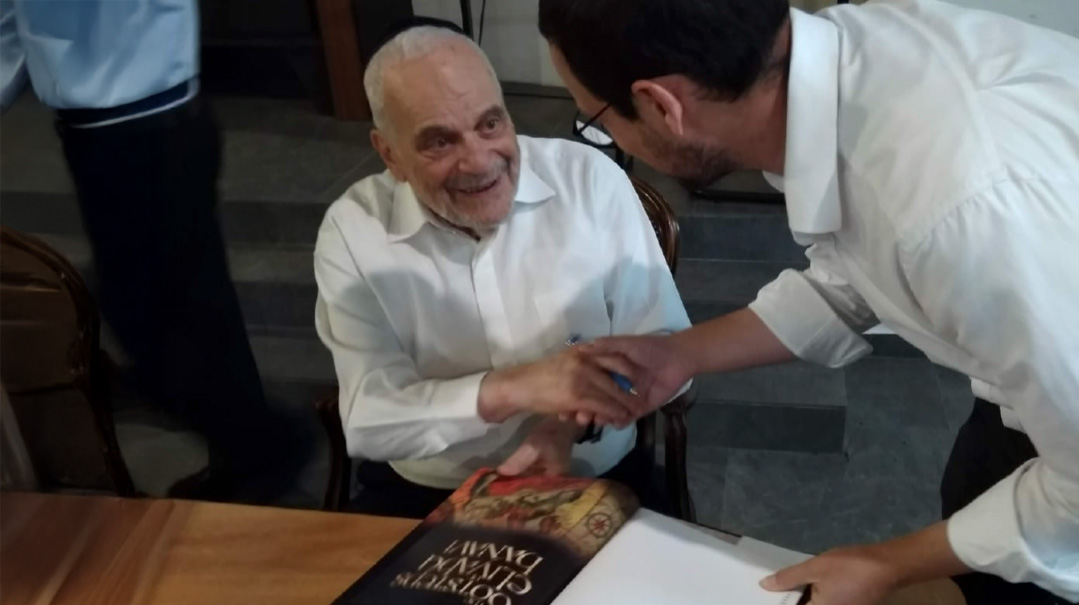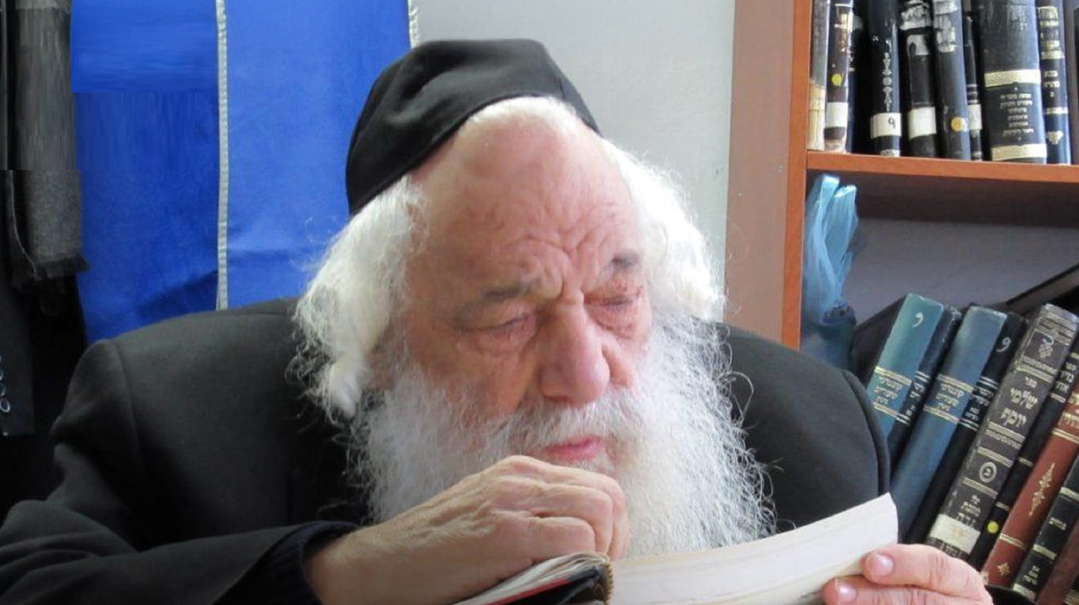Savta of a Generation

Granddaughters of Rebbetzin Tzipporah Feiga Alter a”h write about their grandmother
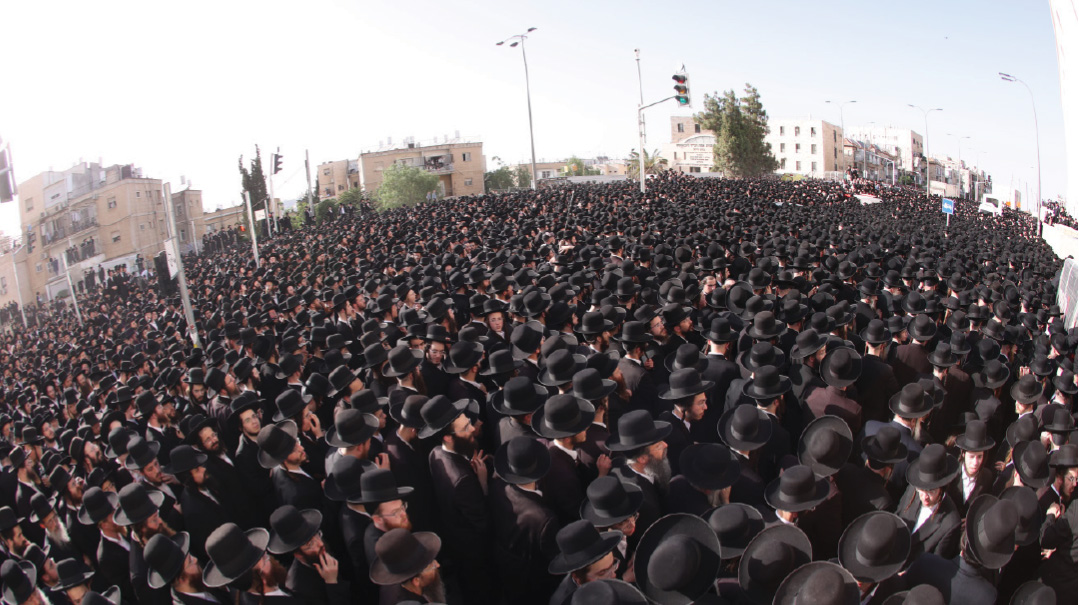
By Ruti Kepler, with Esty Kempinsky
Thousands of chassidim paid their respects to Rebbetzin Tzipporah Feiga Alter a”h last week, eishes chaver to the Pnei Menachem of Gur zy”a. But her granddaughters merited to know another side, a grandmother who learned, taught, took life seriously yet appreciated a good joke, while leaving behind a formidable legacy
IT
was during the shivah for our grandfather, Rebbe Pinchas Menachem Alter of Gur zy”a, that his sons decided to title his book of divrei Torah “Pnei Menachem.”
“Saba had many faces,” they remarked (referring to the meaning of title, “Faces of Menachem”). Savta agreed.
“He wasn’t a simple figure,” she said. “It’s hard to eulogize Saba. How could you ever write a book about him? After all, there were so many aspects to his character, and each one was a world of its own.”
On Sunday last week, when we were asked to write about our grandmother, Mrs. Tzipporah Feiga Alter a”h, who passed away at age 97 on 10 Sivan, we faced the same quandary. Born into the chassidish nobility of the Gur court, a great-granddaughter of the Sfas Emes and the daughter-in-law of the Imrei Emes, she merited to know that generation up close. Yet she had the common touch, patiently giving her attention to everyone.
Before “dialectics” and “complex personality” became fashionable terms, she was there, reconciling contradictions and never fazed by human complexity. She was a public figure and a family woman, a talker and a listener. She integrated action with silence, sharpness with sensitivity, beauty with tradition, strict reverence for G-d with a broad-minded intellectual outlook.
She was eloquent when it came to addressing thousands from a podium, while at the same time she shunned publicity, hated flattery and the pomp and ceremony surrounding a rebbishe family. She knew how to make decisions and demands — but never for herself. She was so watchful that her grandchildren — the “eineklach” — not be pampered, not get the impression that they deserve more than others. After all, their grandfather had accepted the role of a servant, not a monarch.
And at the same time, she seemed to take care of everyone. Of young mothers, for whom she set up a stroller gemach, of the elderly women she visited, of the children of the Jerusalem cheder. When mothers complained that the food at the cheder wasn’t adequate, she went to the cheder kitchen herself to make sure that there would be a nutritious and tasty menu.
She could laugh with the women during a break in davening at the beis medrash on Ralbach Street, and she also knew how to thump the table for silence a moment later, when Krias HaTorah started. “Shah, Krias HaTorah!”
Shah, we’re talking about Savta.
AT
the Gur seminary (high school) in Jerusalem where she taught, she built a Lego model of the Mizbeiach, decades before digital imaging. The focus of her teaching was Sefer Vayikra. Years after she’d retired from teaching, when she heard that one of her great-granddaughters was in eighth grade, she would become animated again, expounding on Olah and Shelamim.
At the seminary, she had a detailed lesson plan for every class. The famed model of the Second Beis Hamikdash at the Holyland Hotel was her favorite spot. She’d visit often, alone or with her granddaughters, looking at it with sparkling eyes as if it were a model of her future home.
“Look how beautiful it is,” she would point with delight at every marble ornament and column. At a certain point, the guides learned to step back when she approached, leaving her to explain the exhibit to visitors instead.
She would explain to her students the significance of the Me’il and Tzitz (the Kohein Gadol’s robe and headplate), Avnet and Choshen (sash and breastplate). At home, we saw the wife of a Kohein Gadol, learning from Saba, learning with him, devoting herself to him, and also knowing how to give him space.
“I’m giving him up,” she told us when Saba accepted the burden of leading the chassidus, bowing under the weight of thousands of followers, transforming from a devoted family man into a public figure, a rebbe.
And her uncanny ability to let him be, to wait for him at home, is something I wish we could take with us.
At home, she was a devoted daughter to her mother-in-law, helping Rebbetzin Feige Mintshe with everything in the 16 years she lived with her. It’s not that “Savta didn’t need privacy,” but she was able to forgo her own needs for what needed to be done. [Rebbetzin Feige Mintshe was the Imrei Emes’s second wife, and mother of the Pnei Menachem. His brothers the Beis Yisrael and the Lev Simcha were from their father’s first wife, Chaya Ruda —Ed.]
She lost two sons, Moshe Bezalel when he was just a child, and years later Rav Yehuda Aryeh, a 27-year-old illui who was severely injured in a car accident on Malchei Yisrael Street and passed away on the first day of Succos in 1988.
As a bereaved mother, Savta bore her suffering with grace. Savta talked to Saba. The two bore their grief together, sitting for hours, talking, talking, and learning. There was no “awareness” in those days, no support groups or public dialogue about bereavement. But Saba and Savta found consolation together. The loss is never forgotten, but her motto was that you recover in order to hold the family together, to continue to live.
IN
her lectures and lessons, she would integrate midrashim, sayings, and parables from all over the Torah, always organized, always succinctly. Straight and to the point. Women would tell us, “When your grandmother stands up to speak and says that she’ll talk for ten minutes, we know that in exactly ten minutes she’ll step away from the podium....”
She participated in the Torah and halachah conversations at the Shabbos table, she asked questions, understood the answers and posed challenging follow-up questions. She didn’t let a subject go until she’d delved into its core.
“Nashim b’mai zachyan [in what merit do women ascend to Olam Haba]?” her grandson Rabbi Avraham Mordechai eulogized at her funeral. “There are women like Savta, whose merit is in the ‘mai [what],’ the power of questioning, of delving deeper, striving for the truth, for what Hashem wants for each of us.”
She knew Torah, she knew Tanach. And yet she always consulted Saba about what to say and how. “I need Korach’s handkerchief,” she would tell him, referencing a darshan who only had one drashah in his repertoire, about parshas Korach. Each time he stood up to speak, he would drop his handkerchief, bend down to pick it up, sigh, and say, “Oy, when Korach was swallowed up in the ground, his handkerchief was swallowed with him, too,” and from there continue with the drashah.
But Savta didn’t just have one drashah; She was a treasure trove of information on every subject.
“Eishes chaver k’chaver,” her son Rav Daniel Chaim Alter eulogized at the funeral. “When Rebbetzin Feige Mintshe died, the Beis Yisrael said of her that there is such a thing as an eishes chaver who is seen as a talmid chacham in her own right. One could say of Ima that she was also like a chaver mamash.”
When Saba became Rebbe, the Shabbos meals at home became shorter. The grandchildren wanted to “speed things up,” so that Saba could get to the tish already — but when they came to the kitchen too quickly for her liking to serve the next course, Savta stopped them with a smile. “Go say divrei Torah,” she would admonish them, sending them back to the table.
Savta was intelligent. Cerebral. Multilingual. Yet she could speak to others in their own language, while always maintaining a high, dignified level. But Savta didn’t just talk. There was no gossip or slander, simply because it wasn’t her level. Women knew that when they came up to her, they had to bring something with them. A new idea they’d encountered, an interesting lecture they’d heard, a novel educational principle.
Even with us granddaughters, she always wanted to hear what we’d learned, what we’d read, what we had to say about such and such. Gossip? She wasn’t interested.
“Why don’t we make blintzes with mushroom sauce for the Shabbos seudah?” she once asked in one of her lectures, staunch in the idea that as much as we might like the trendy and the new, we have to keep alive the good and the old.
Savta managed an enviable balance between the old and the new, the beautiful and the traditional. She laid out an elegant table, down to the exacting rules of etiquette in setting out the cutlery on her pristine tablecloth. Yet there was never a contradiction to the preservation of her Polish minhagim, which she adhered to tenaciously, always serving the same fixed order of gefilte fish, soup, chicken, and compote.
Savta maintained her home with utmost devotion. Her home was her kingdom. She refused to let any helpers into her special space. Visitors? With pleasure. Guests? Without hesitation. But the dishes she would wash herself — at the very most the granddaughters could help. During seudos, the grandchildren served, and as long as her strength held, she would do her own cooking — fish and eggplant salad, soup and chicken, schnitzel and cake.
Years passed before she would let Rabbi Yaakov David Flinker, the attendant who came to make Havdalah on Motzaei Shabbos, stay to wash dishes — but not all the dishes! Just some dishes….
Savta had quite a green thumb and would tend to the plants in her own little mikdash me’at herself, so they grew green and lush and adorned her home — a house of G-d that should be beautiful inside and outside. She would move lovingly from plant to plant, flower to flower, watering them as she spoke to each one.
Savta taught us to love Torah. In fact, she didn’t just teach Torah, she truly loved Torah. When she stood up in the ezras nashim of the Ralbach beis medrash during the break to read Rav Yisrael Najara’s shtar tena’im between HaKadosh Baruch Hu and Knesses Yisrael, we heard her voice, we knew which parts moved her when her voice shook, when it broke on a particular word: “To give her heart and soul to the Torah... With devotion and desire, bidchilu u’rechimu....”
Savta not only appreciated Torah learners, she not only valued their time; she not only married a talmid chacham and raised sons to be talmidei chachamim — she loved learning Torah herself. Understanding it, interacting with it, fulfilling it.
And we saw that and imbibed it ourselves. Our spirituality, as girls, was not limited to making chocolate cheesecake for Shavuos. Our connection to the Torah didn’t run through an intermediary. We earned knowledge of our own. The Torah was hers, too, and ours.
Savta was a serious woman. She took time, people, and words very seriously. It wasn’t uncommon for her to arrive at a simchah hall as the waiters were still folding the napkins and none of the family members were to be found. After all, she’d been invited for seven o’clock….
She didn’t make jokes about life. She took life seriously, practically, weightily. She always did what needed to be done, precisely. She was also a real stickler for grammar, and wouldn’t let her grandchildren get away with recounting some incident with incorrect conjugation.
But despite her profound seriousness, Savta was also full of humor, good nature, and wit, but never in a biting way. There might have been some jokes and witticisms, but there were no barbs, derogatory epithets, or sarcasm. There was genuine patience and human respect even for those less wise than her.
Even in her later years, when Savta found it difficult to remember people’s names and faces, she tried to avoid showing that she didn’t remember her visitors, lest they be offended. With subtle verbal sophistication, she would try to tease out from the conversation where she knew them from.
And Savta knew how to laugh, too.
I heard the following story from a chareidi woman who was one of the pioneers of chareidi female stand-up comedy in Israel, a new genre at a time when such performances were a novelty. “My sister and I decided to produce a comedy show for women,” she told me. “We invested a lot of time and money in writing, editing, rehearsing, marketing — and finally, we got our first gig at a major conference for women. We were so excited.
“We went up on stage, facing row after row of icy, dignified women. In the front row was your grandmother, Rebbetzin Tzipporah. We started the skit we’d invested so much in, and we knew it was really good — but no one laughed.
“We reeled off one gag after another, but the audience seemed unable to unwind, so we awkwardly stumbled through our act. But then, at the next punchline, we heard a hearty, sympathetic laugh erupt from the front row. Your grandmother, Rebbetzin Tzipporah, had started laughing, warmly, joyfully, freely.
“And after that, it was as if the ice was broken, and the entire audience relaxed and allowed themselves to enjoy the performance.”
Such was our Savta, this shrewd woman who could laugh seriously while leaving behind such a rich and multifaceted legacy. A legacy from which there’s something for everyone. Whoever wants is free to take and pass it on to the next generation.
(Originally featured in Mishpacha, Issue 1017)
Oops! We could not locate your form.

